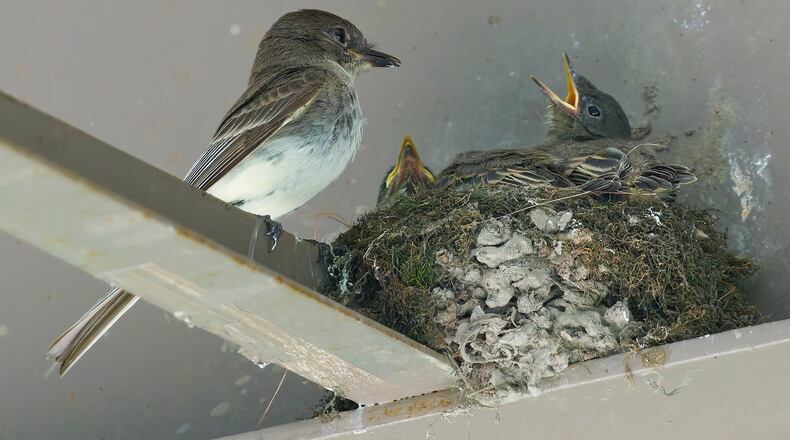A major study published this month in the journal Science shows that North American bird populations are in steep decline, with 75% of species affected. Most alarmingly, common birds —the species that many of us see every day — have suffered the greatest losses, according to a study by a team of international scientists at seven institutions.
To me and many others, it is a prime reason why saving the life of even one little bird matters, no matter how common it is. Saving wild creatures — even just one — can be a way of countering the harm humans are inflicting on the natural world.
So, it was heartening the other day to hear about a simple act of kindness to save a nest of one of Georgia’s most common songbirds, the Eastern phoebe.
According to bird enthusiast Teresa Mayes, who lives in northeast Atlanta near Herbert Taylor Park, a pair of phoebes has nested each spring for years under a pedestrian bridge at the park’s entrance. This spring was no exception, as Teresa and her husband, John, discovered during their walks.
But in late April, Teresa learned a city of Atlanta contractor was ready to make extensive repairs to the bridge. She feared the work would destroy the phoebes‘ nest, which contained two babies.
She and others appealed to the contractor to delay the construction until the baby phoebes fledged and had left the nest. The contractor agreed to wait, and the little birds fledged successfully. Teresa and other bird lovers thanked the construction workers for their compassion and for protecting the birds.
“There’s no way I’m going to ignore any bird in distress that I can help,” she said.
The Eastern phoebe is a plump, drab species of flycatcher found throughout Georgia during winter but breeds in North Georgia during spring and summer. It usually builds its cup-shaped nest of mud, moss, grass and feathers under bridges, culverts, decks, eaves of buildings, picnic shelters and other human-built structures. Females lay four to five eggs per nesting, which may be twice per season.
IN THE SKY: From David Dundee, retired Tellus Science Museum astronomer: The moon will be last quarter Tuesday. Mercury and Venus are low in the east before dawn. Mars is high in the west. Jupiter is low in the west just after dark. Saturn rises in the east a few hours before sunrise.
Charles Seabrook can be reached at charles.seabrook@yahoo.com.
About the Author
Keep Reading
The Latest
Featured

